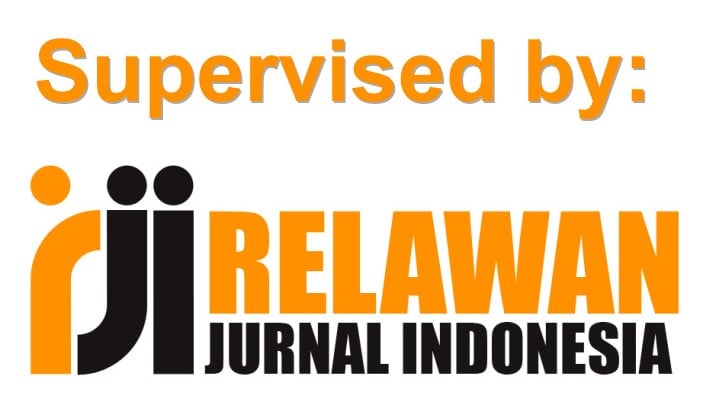Religiusitas dan Kecenderungan Melakukan Kekerasan dalam Rumah Tangga
DOI:
https://doi.org/10.18592/jsi.v8i1.3556Keywords:
character, children, violence, religiusitas, kekerasan dalam rumah tangga, suamiAbstract
Family is the smallest unit of the organization which can develop someone's character. Every human being hopes to have tranquility, affective, and merciful family. However, domestic violence case is increasing each year. It is the sign that human beings' morality is decreasing day by day as well as a misunderstanding of religious teachings. Thus, this study aimed to find out the relationship between religiosity and the tendency of committing domestic violence among husband in Banda Aceh city. This study used a quantitative method with a purposive sampling technique. The participants recruited were 120 husbands. The result showed there was a negative and significant relationship between religiosity and the tendency of committing domestic violence among husband in Banda Aceh city with Pearson correlation value r= -0,788, p= 0,00 (p=<0,05). The finding of this study implied that religiosity has a significant contribution toward the tendency of committing domestic violence in the family. Hence, understanding religious teaching is significantly needed for achieving a peaceful family.References
Anggarasari, R. E. (1997). Hubungan Tingkat Religiusitas Dengan Sikap Konsumtif Pada Ibu Rumah Tangga. Psikologika: Jurnal Pemikiran dan Penelitian Psikologi, 2(4), 15–20.
At-Tharirah, A. (2006). Kekerasan Rumah Tangga Produk Kapitalisme (Kritik Atas Persoalan KDRT). UIN Sunan Gunung Djati.
Yuhono, E. (2018). Pendampingan Psikologis Bagi Korban Kekerasan Dalam Rumah Tangga (KDRT) di Lembaga Advokasi Perempuan Damar Bandar Lampung [Skripsi (tidak diterbitkan)]. Universitas Negeri Raden Intan.
Hurlock, E. B. (2012). Psikologi perkembangan. Erlangga.
Marchira, C., Amylia, Y., & Winarso, M. S. (2007). Hubungan Kekerasan dalam Rumah Tangga dengan Tingkat Kecemasan pada Wanita. Berita Kedokteran Masyarakat, 23(3), 119.
Mufidah. (2008). Psikologi Keluarga Islam Berwawasan Gender. UIN Malang Press.
Puspitaningtyas, R. (2004). Profil Perempuan Korban Kekerasan Dalam Rumah Tangga [Skripsi (tidak diterbitkan)]. Universitas Gadjah Mada.
Ramadhan, R. A. (2018). Pengaruh Kekerasan Dalam Rumah Tangga (KDRT) Terhadap Tingkat Keharmonisan Dalam Keluarga di Kelurahan Umban Sari Kecamatan Rumbai Kota Pekanbaru [Disertasi]. Universitas Riau.
Safaria, T., & Darokah, M. (2005). Perbedaan Tingkat Religiusitas, Kecerdasan Emosi, dan Keluarga Harmonis Pada Kelompok Pengguna Napza Dengan Kelompok Non-Pengguna. Humanitas: Jurnal Psikologi Indonesia, 2(2), 89–101.
Situmorang, T. W., & Syifa, R. (2008). Situmorang, T, W. & Syifa’a, R. (2008).Hubungan antara religiusitas suami dengan intensi melakukan kekerasan dalam rumah tangga. (Skripsi Tidak Dipublikasikan).Fakultas Psikologi dan Ilmu Sosial Budaya.Universitas Islam Indonesia.Yogyakarta. [Skripsi (tidak diterbitkan)]. Fakultas Psikologi dan Ilmu sosial Budaya Universitas Islam Indonesia.
Takariawan. (2004). Agar Cinta Menghiasi Rumah Tangga Kita. Era Intermedia.
Downloads
Published
How to Cite
Issue
Section
License
Authors who publish with this journal agree to the following terms:
- Authors retain copyright and grant the journal right of first publication with the work simultaneously licensed under a Creative Commons Attribution License that allows others to share the work with an acknowledgment of the work's authorship and initial publication in this journal.
- Authors can enter into separate, additional contractual arrangements for the non-exclusive distribution of the journal's published version of the work (e.g., post it to an institutional repository or edit it in a book), with an acknowledgment of its initial publication in this journal.
- Authors are permitted and encouraged to post their work online (e.g., in institutional repositories or on their website) before and during the submission process, as it can lead to productive exchanges, as well as earlier and greater citation of published work (See The Effect of Open Access).





















